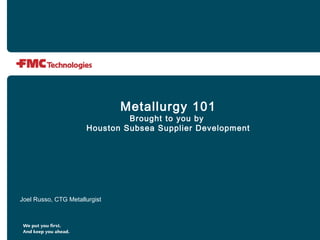This document provides an overview of metallurgy and material properties. It discusses the main classes of steels including carbon steels, alloy steels, and stainless steels. It also covers alloying elements, heat treatment processes, mechanical properties testing, and non-destructive testing methods. The key information presented includes the classifications of steels based on chemistry, the effects of common alloying elements, and standard tests used to evaluate material properties and integrity.


























